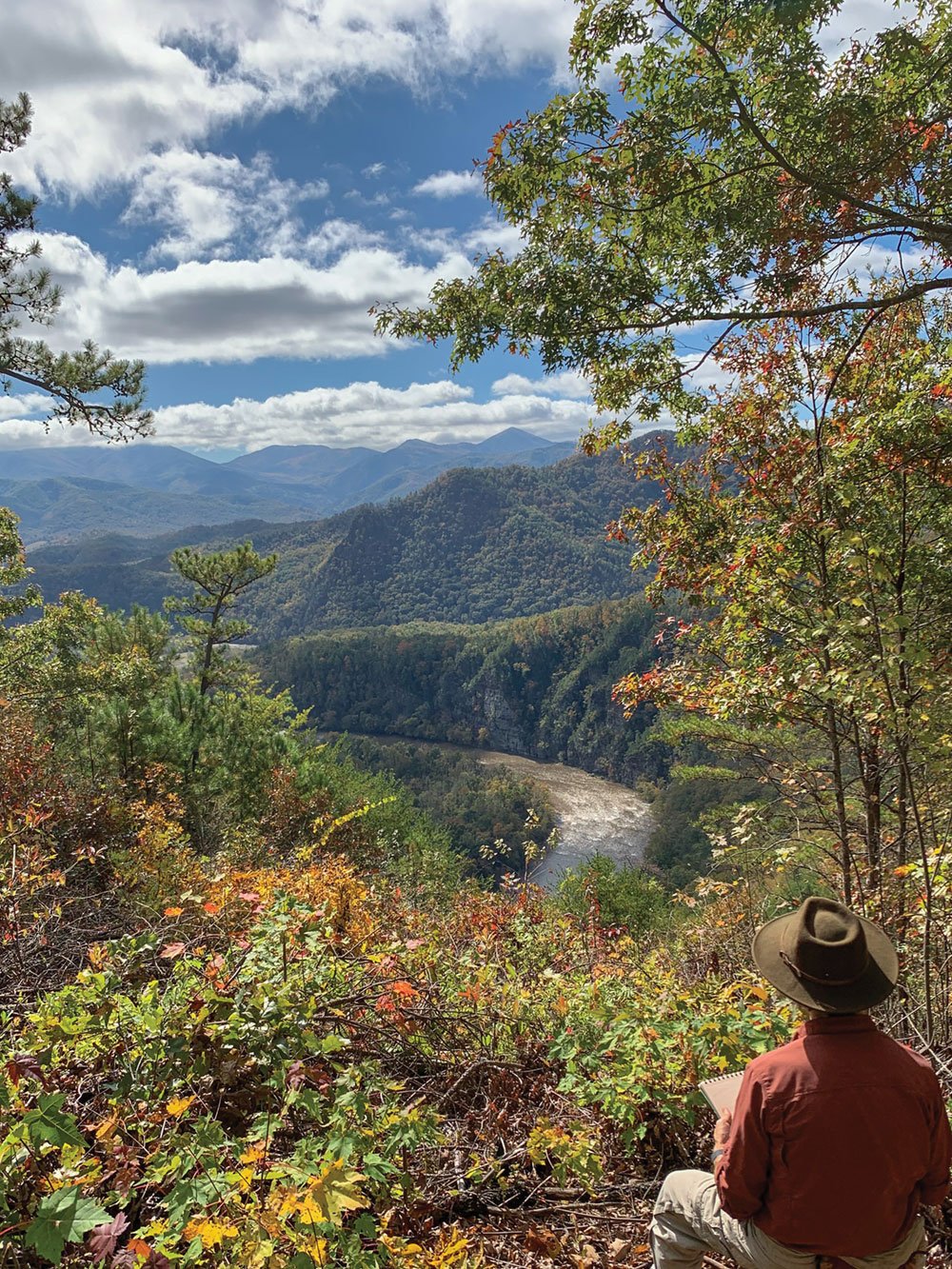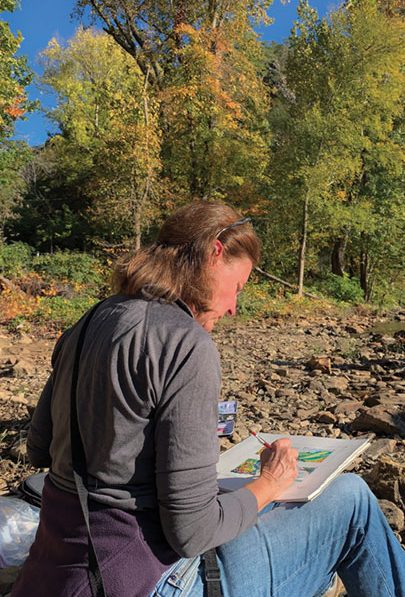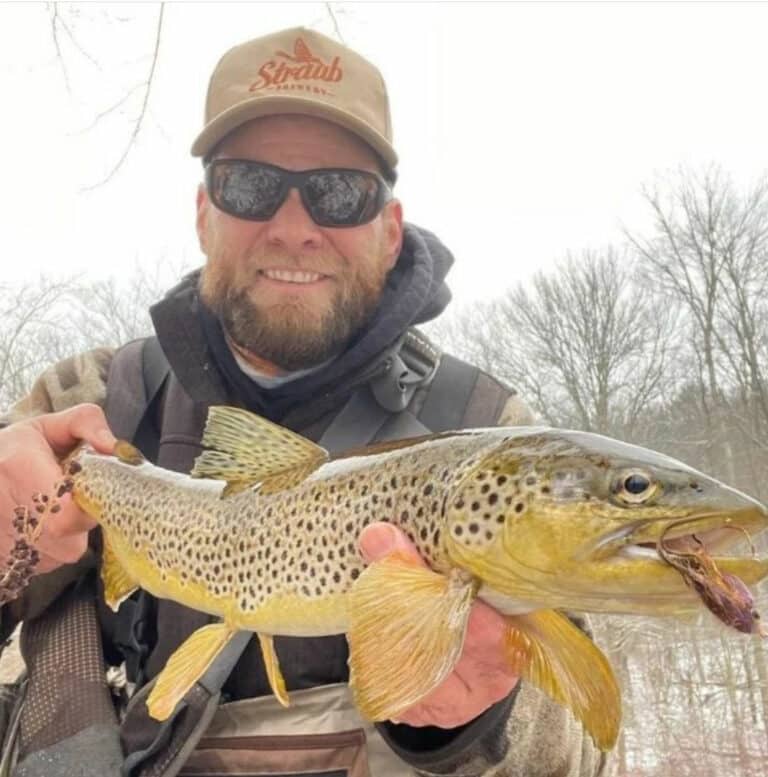Initiative Encourages Conservation Through Landscape Art
Like everything else, the Preserving A Picturesque America (PAPA) project was sidelined by COVID-19. But, in many ways, the preservation through art initiative is more relevant now than ever. Over the past year, many Americans found recreation, entertainment, and solace in the outdoors. Group outings led by PAPA founder Scott “Doc” Varn encounter wilderness through plein air painting or other forms of open-air, portable artwork.
Works created from those trips will be featured in an upcoming exhibition and sale—tentatively scheduled for September—and publication. That collection hopes to recreate, from a contemporary perspective, the illustrations, prints, and writings featured in Picturesque America, a series of coffee table books comprising bound serials of the same name, published 1872-74.
Varn discovered the series more than a decade ago while searching for wood carving prints depicting western North Carolina. The artwork he found in an estate sale was from “a serial released in 48 parts and then bound into two very large volumes with over 900 engravings,” he explains. Intrigued, he began to seek out the Picturesque America locales while traveling with his family.
“The first place I found and did a sketch of was in Yosemite, 11 years ago,” he recalls. “I literally went to Cathedral Spires with one of the old books in a backpack.”
But, “just seeing it isn’t [enough]. We wanted to find the place where the [original] artist was” while making a reference sketch. For Varn, it was a lesson to read through the book’s accompanying text, in which the artist described the journey taken to reach the remote scene.

Illustrator and landscape painter Harry Fenn captured Varn’s imagination. The Picturesque America contributor journeyed from South Carolina to eastern Tennessee on what was known as the Buncombe Turnpike or the Drover’s Road—a 75-mile route that opened western North Carolina to settlement and trade in the early 1800s. Fenn’s impressions are archived in the serial “The French Broad” and Varn is using it as a guide for a modern-day adventure along the same route. The idea is “to promote the upcoming exhibition,” Varn says, “and do something that hasn’t been done in 100 years.”
The journey, slated for the first two weeks of May, will begin at Chimney Rock State Park. Varn and his travel partner, author and artist Mike Wurman, hope to start the two-week trek by carriage. A hike into Asheville, N.C., includes a stop at Pritchard Park, through which the Drover’s Road passed. From there, “We’ll mostly be beside the [French Broad] river all the way to Marshall.” In that town, the railroad now runs where the Buncombe Turnpike once was, so Varn and Wurman will travel by boat.
“We’ll be able to see some things from the river,” Varn says. “Sometimes you can see places where the rocks were moved for the turnpike, and some walls, and what they called stands — places you could put your pigs or your cattle for the night.”
He continues, “Every time we get to a place where Harry Fenn did artwork, we’re going to stop and do it again.” Other trip highlights will include visits to the studios of PAPA artists Mark Henry and Taylor Barnhill, camping with Sarah Jones-Decker (author of Appalachian Trail Shelters) and overnight stays in houses and inns that were along the route in 1870. The trip will culminate in eastern Tennessee, near Del Rio.
Varn hopes those interested in PAPA and the trek will meet up on the trail to make art or hike for a bit. “We’re trying to celebrate the history of this and raise awareness for what our project is about,” he says.
PAPA, which is based in Asheville, boasts 68 chapters and counting, nationwide. Current chapters take their names and areas of focus from the original serials, though Varn points out a need for additional chapters whose regions were not included in Picturesque America. Future plans for the contemporary publication series are already in the works. Maine will likely be the subject of the second serial. But “the chapter called Lower Mississippi is encouraging us to get busy on that one, because it’s one of the most depressing environmental disasters,” Varn says. “When we’re doing the artwork, it will be unattractive — showing what was there, and what it looks like now.”
Likely many of the new landscape pieces created by PAPA members will tell the story of environmental degradation over the past century and a half. But there is good news, too. For example, “The Yellowstone serial was titled ‘Our National Park,’ because it was the only one,” Varn says. “The mission [today] is to protect these places. Artists 150 years ago didn’t have that in mind. They were accidental conservationists.”
Picturesque America was created not out of a desire for preservation of wild spaces, but in response to a growing outdoors movement—a health craze. But, as subscribers discovered the beauty of the serial’s landscapes, they also realized the importance of saving those places. The collection helped to spur the creation of the National Parks system.
Another modern improvement is the inclusion of women. In Picturesque America, they were rarely represented. “There was a female writer who had to write under a pseudonym—Christian—who coined the phrase ‘Land of the Sky,’” Varn reveals. “In some cases, women did write under their own names, and there’s artwork that depicts women adventurers.”
But, he continues, “originally, there was no representation of women [visual] artists [perhaps] because it was a hard thing to do. Harry Fenn would do anything to get to a spot”—climbing, camping rough, and traversing treacherous terrain. “A lot of people would have said that was not a thing for women to do.”
In today’s PAPA membership, women adventure artists outnumber men.
What hasn’t changed is the focus on spending time in nature. PAPA, says Varn, “is about the joy of making art for art’s sake. It’s very open to anyone on any level. It’s about getting outside for the experience.”
Learn more at preservationthroughart.org.
Cover photo: PAPA members on a paint-out. Photo courtesy of Scott Varn / preserving a Picturesque America








